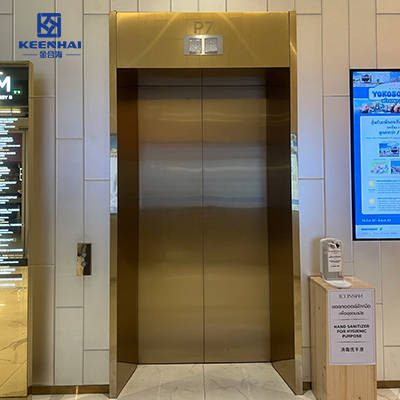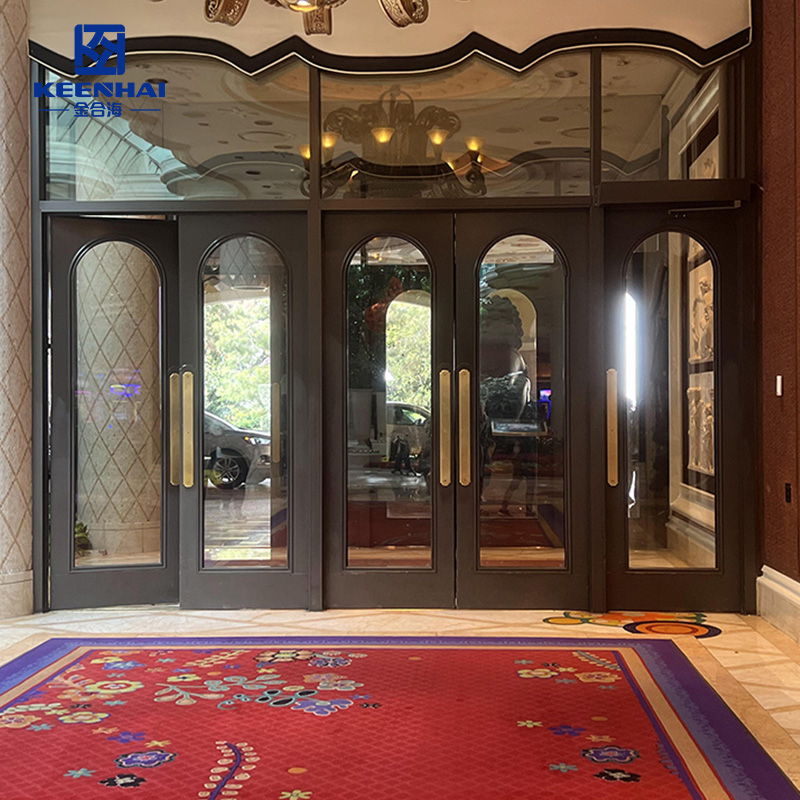In 2025, the average cost of stainless steel elevator doors ranges from $1,800 to $5,000 per set, depending on size, finish, and automation. A basic 304 hairline finish door for residential use may cost around $2,000, while a commercial-grade 316 mirror finish with automatic sensors can exceed $4,500. Custom designs or PVD-coated finishes add another 15–25% to the total price.
1.Average Cost of Stainless Steel Elevator Doors in 2025
If you’re planning to upgrade your building’s elevators in 2025, understanding the real average cost of stainless steel elevator doors is the first step. Prices have slightly increased this year due to higher stainless steel material costs and labor rates, especially in urban commercial projects. On average, most stainless steel lift doors fall between $2,800 and $6,500 per set, depending on size, finish, and automation level. For high-rise office buildings or hotels, costs can reach up to $9,000 when custom designs or premium PVD finishes are applied.
In mid-range residential buildings, property developers often choose hairline or brushed stainless steel finishes for a clean look without overspending. For example, a residential complex in Dallas recently upgraded 12 elevator units, each door costing around $3,200, including surface treatment and frame alignment. This is a realistic range for most medium-grade installations.
1.1Typical Price Range per Door
The cost of elevator doors made of stainless steel varies significantly based on both finish quality ಮತ್ತು operating mechanism. Automatic sliding models typically cost more than manual ones because they include motorized systems, sensors, and custom fittings.
Here’s a simple comparison showing how finish and mechanism type influence total price in 2025:
| Door Type & Finish | Average Price (USD) | Common Use Case |
|---|---|---|
| Brushed Stainless Steel Door | $2,800 – $3,800 | Residential / Small Office Buildings |
| Mirror Stainless Steel Door | $3,500 – $5,000 | Hotels / Shopping Malls |
| PVD-Coated Stainless Steel Door | $5,000 – $7,000 | High-End Commercial Towers |
| Etched or Patterned Finish Door | $6,000 – $9,000 | Custom Luxury Projects |
This year, PVD-coated stainless steel doors are trending, offering stronger scratch resistance and richer colors. Developers are choosing them over standard finishes because they combine style and longevity — especially in areas with constant foot traffic.
1.2Cost Differences Between Residential and Commercial Models
The price gap between residential and commercial elevator doors mainly comes from customization, frequency of use, and automation standards. A residential building typically uses two-panel stainless steel doors, while a high-rise office might need four-panel automatic systems with faster open-close speeds and more durable framing.
-
Residential Applications – Home or small apartment elevators usually require fewer design modifications. A simple brushed finish with standard size panels can stay under $3,000.
-
Commercial Projects – In contrast, hotels, hospitals, or office towers use custom stainless steel entrances for a more upscale appearance and smoother performance. For instance, a 25-story business tower in Singapore installed mirror-finish stainless steel entrances costing about $6,800 per unit due to added automation and branding features.
It’s also worth noting that installation labor and logistics play a key role in total pricing. Commercial projects often require crane lifting, alignment testing, and fire-rated components, all of which can add 15–25% to the overall budget.
If you’re sourcing from a reputable stainless steel manufacturer like pvdstainlesssteel, bulk ordering and consistent material grades can help reduce costs while maintaining long-term quality.
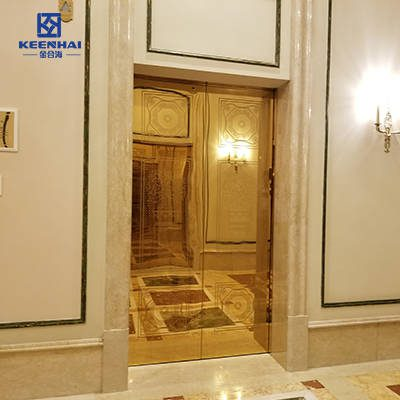
2. Key Factors That Influence the Price
The cost of stainless steel elevator doors in 2025 depends on several key elements that directly affect material expense, durability, and visual impact. From the type of stainless steel used to the complexity of custom design, these details can easily create a price difference of several thousand dollars per door. Below are the main pricing factors you should understand before placing an order.
2.1 Material Grade and Finish Type (304 vs 316, Mirror vs Hairline)
The grade of stainless steel is one of the biggest cost drivers. Most elevator doors made of stainless steel are manufactured using Grade 304 or ಗ್ರೇಡ್ 316. Grade 304 is the most common, suitable for indoor or standard environments, while Grade 316 contains added molybdenum, offering enhanced corrosion resistance — ideal for coastal or humid conditions like seaside hotels or subway stations.
When it comes to surface finishes, mirror and hairline are the two most popular. Mirror-finished doors reflect light beautifully and make the space feel premium, but they are more prone to fingerprints and require extra polishing. Hairline finishes, on the other hand, provide a subtle matte texture that hides scratches better and reduces maintenance costs.
| Material & Finish Type | Characteristics | Price Impact | Best Application |
|---|---|---|---|
| 304 Hairline Finish | Durable, scratch-resistant | $$ | Residential & Office Buildings |
| 304 Mirror Finish | High gloss, stylish appearance | $$$ | Commercial Centers / Hotels |
| 316 Hairline Finish | Strong corrosion resistance | $$$ | Coastal Areas / High Humidity Zones |
| 316 Mirror Finish | Premium aesthetic, longest lifespan | $$$$ | Luxury Projects / High-End Towers |
Developers looking for both aesthetics and long-term performance often choose 316 hairline stainless steel doors for their elevators, balancing cost and practicality.
2.2 Door Size, Thickness, and Customization Level
Door dimensions and customization options also play a huge role in determining total cost. A standard single-panel elevator door measures around 900mm x 2100mm, while larger or multi-panel systems for commercial buildings can exceed 1500mm in width and require reinforced framing.
The thicker the stainless steel sheet, the more resistant it is to dents and vibration. However, material thickness directly increases the weight, which means higher fabrication and transport expenses.
Customization adds another layer of pricing. Engraved logos, decorative etching, or integrated LED trims can increase total costs by 15–40%, depending on design complexity. Many luxury hotels prefer custom stainless steel entrances that match their architectural themes or brand identity — for example, laser-etched mirror panels with golden PVD finishes installed in a downtown Chicago business tower. (Related product: ಸ್ಟೇನ್ಲೆಸ್ ಸ್ಟೀಲ್ ಎಲಿವೇಟರ್ ಪ್ರವೇಶದ್ವಾರಗಳು)
To summarize this factor simply: the more customized your elevator door, the higher the cost — but also the greater the visual impact.
2.3 Supplier Location and Production Scale
Another often-overlooked factor is the supplier’s location and production capacity. Ordering locally can reduce shipping costs and lead times, but it may come with slightly higher fabrication prices. In contrast, sourcing from large-scale manufacturers in industrial hubs like Foshan or Guangzhou — where pvdstainlesssteel operates — allows you to benefit from advanced coating technology and bulk pricing discounts.
Suppliers with automated polishing lines, laser-cutting machines, and in-house PVD coating systems can produce consistent finishes across hundreds of panels, reducing waste and rework costs. This efficiency translates to lower prices per unit without sacrificing quality.
For example, a commercial project that orders 50 stainless steel lift doors from a high-volume producer can typically save 10–15% compared to purchasing from smaller workshops. On top of that, large-scale suppliers usually provide post-installation technical support, which minimizes long-term maintenance expenses.
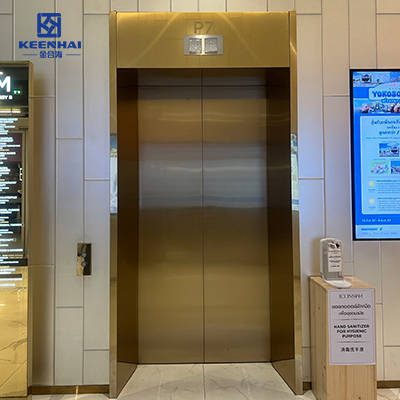
3.Cost Breakdown: Material, Fabrication, and Installation
3.1Material and Surface Treatment Costs
The base cost of elevator panels largely depends on the stainless steel grade and thickness. Adding PVD coating increases the price by about 15–30%, depending on the finish type (e.g., gold, bronze, or titanium). However, PVD-coated panels often reduce the need for polishing and refinishing, which helps offset the upfront cost. For premium decorative finishes, the material and coating together can range from $120–$180 per square meter.
3.2Installation and Labor Charges
Installation costs vary based on project size, panel customization, and building height. Simple interior wall panels might cost around $20–$40 per square foot for installation, while complex elevator interiors with tight tolerances may exceed $60 per square foot. Skilled labor is essential for aligning coated panels correctly to avoid scratches or edge mismatches.
3.3Maintenance and Replacement Expenses
PVD-coated panels require minimal maintenance — just regular cleaning with mild detergent and soft cloths. Unlike painted or anodized finishes, they don’t peel or corrode easily. Over a 10-year lifecycle, maintenance costs are typically 30–40% lower compared to uncoated stainless steel. Replacement is rarely needed unless panels are physically damaged.
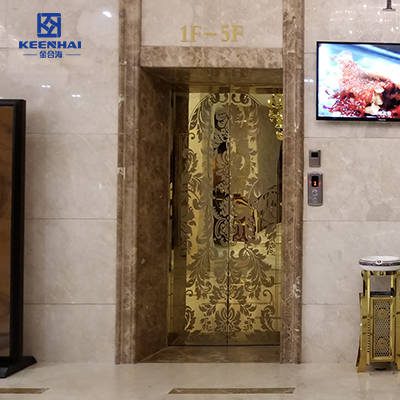
4.Comparing Different Types of Elevator Doors
4.1Stainless Steel vs Aluminum or Glass Elevator Doors
When choosing elevator doors, material selection has a huge impact on cost, durability, and maintenance. Stainless steel doors are strong, fire-resistant, and low-maintenance, while aluminum is lighter but less durable. Glass doors offer a modern look but scratch easily and require constant cleaning. Below is a clear comparison:
| Door Material | ಬಾಳಿಕೆ | Maintenance | Cost Range (USD) | ಅತ್ಯುತ್ತಮ ಬಳಕೆಯ ಸಂದರ್ಭ |
|---|---|---|---|---|
| ಸ್ಟೇನ್ಲೆಸ್ ಸ್ಟೀಲ್ | ಹೆಚ್ಚಿನ | ಕಡಿಮೆ | $2,800–$6,500 | High-traffic commercial & residential buildings |
| Aluminum | ಮಧ್ಯಮ | ಮಧ್ಯಮ | $2,000–$4,000 | Low-rise residential or light commercial projects |
| ಗಾಜು | ಕಡಿಮೆ | ಹೆಚ್ಚಿನ | $3,000–$5,500 | Modern offices, shopping malls, low-traffic elevators |
4.2Manual vs Automatic Door Systems
Manual doors are simple and cost-effective, ideal for low-rise or freight elevators. Automatic doors improve safety, energy efficiency, and user experience but cost 20–30% more upfront. Here’s a direct comparison:
| Door Type | Operation | Upfront Cost | Maintenance | Best Application |
|---|---|---|---|---|
| Manual | Human-operated | $1,500–$3,000 | ಕಡಿಮೆ | Residential or freight elevators |
| Automatic | Motorized sliding | $2,500–$5,500 | ಮಧ್ಯಮ | Commercial buildings, hotels, high-rise apartments |
For more details, visit our official Stainless Steel Elevator Door page to get a quote.

